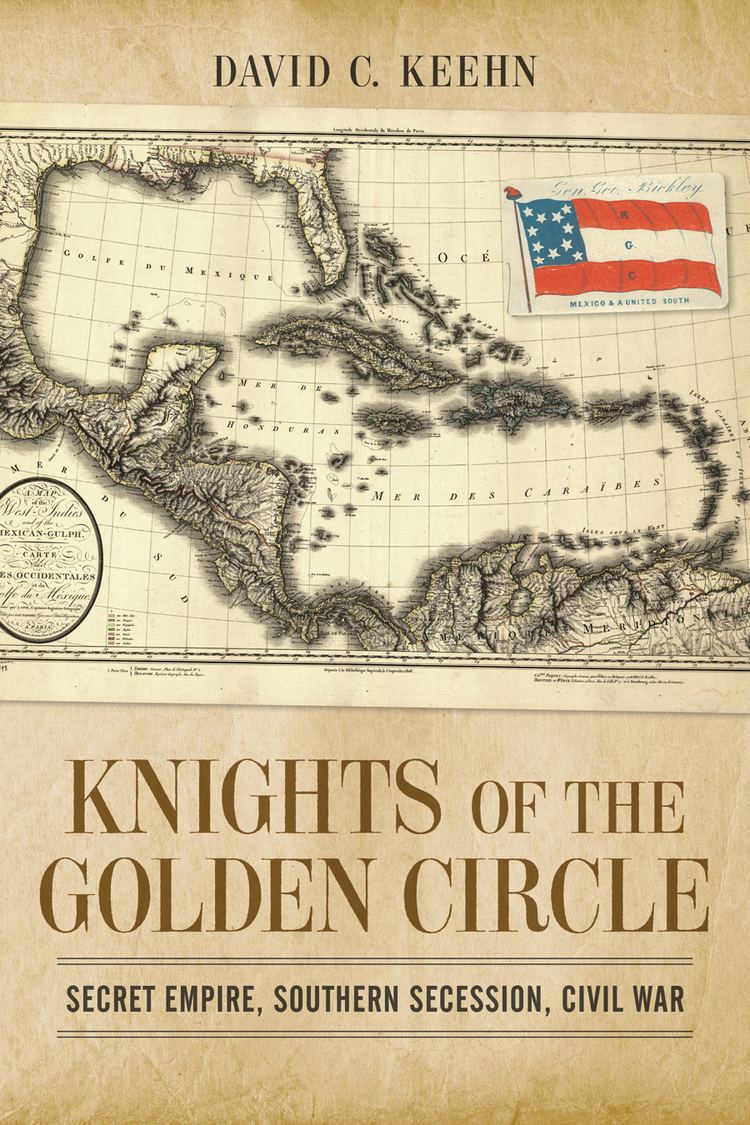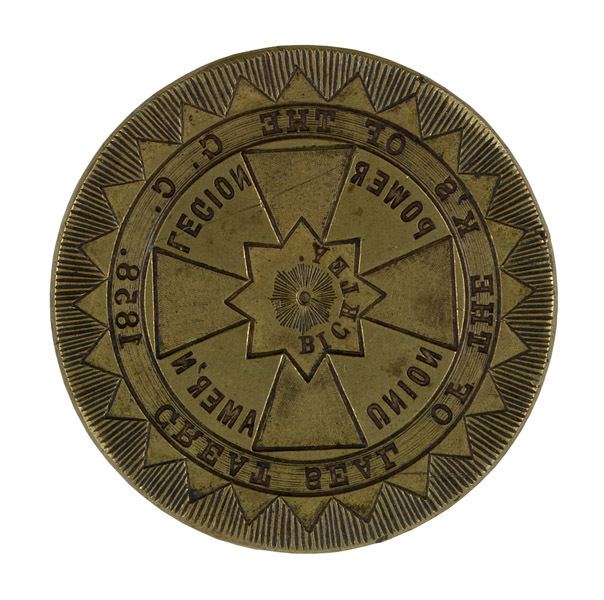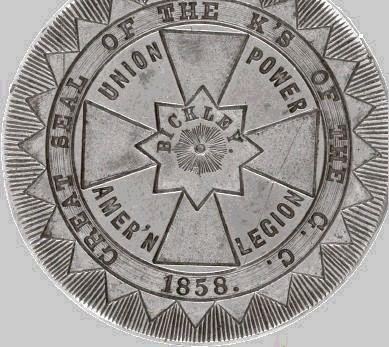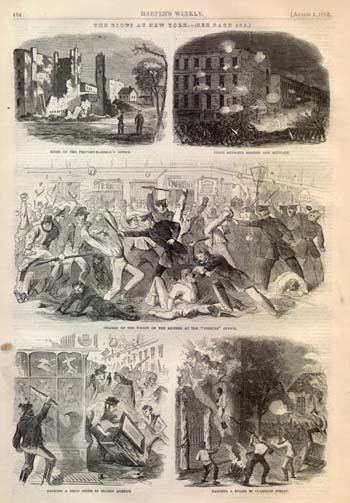Abbreviation KGC Official language English Founded 1854 | Formation 1854 | |
 | ||
Purpose U.S. annexation of the Golden circle | ||
The Knights of the Golden Circle (KGC) was a secret society in the mid-nineteenth-century United States. The original objective of the KGC was to annex a "golden circle" of territories in Mexico, Central America, northern South America, and the Caribbean for inclusion in the United States as slave states. As abolitionism in the United States increased after the Dred Scott Decision was issued, the members proposed a separate confederation of slave states, with U.S. states south of the Mason-Dixon line to secede and to align with other slave states to be formed from the "golden circle". In either case, the goal was to increase the power of the Southern slave-holding upper class to such a degree that it could never be dislodged.
Contents
- Early history
- In the Southwest
- In the North
- Conspiracy theory
- Alleged members
- In popular culture
- References

During the American Civil War, some Southern sympathizers in the Union or Northern states, such as Ohio, Illinois, Indiana, and Iowa, were accused of belonging to the Knights of the Golden Circle, and in some cases, such as that of Lambdin P. Milligan, they were imprisoned for their activities.

Early history

George W. L. Bickley, an Indiana-born doctor, editor, and "adventurer" who lived in Cincinnati, founded the association. Records of the KGC convention held in 1860 state that the organization "originated at Lexington, Kentucky, on the fourth day of July 1854, by five gentlemen who came together on a call made by Gen. George Bickley". He organized the first castle, or local branch, in Cincinnati in 1854. Hounded by creditors, he left Cincinnati in the late 1850s and traveled through the East and South, promoting an expedition to Mexico. The group's original goal was to provide a force to colonize the northern part of Mexico and the West Indies. This would extend pro-slavery interests.
In the Southwest

In 1858, future Confederate States Army brigadier general Elkanah Greer established KGC castles in East Texas and Louisiana. Although a Unionist, United States Senator Sam Houston introduced a resolution in the U.S. Senate in 1858 for the "United States to declare and maintain an efficient protectorate over the States of Mexico, Nicaragua, Costa Rica, Guatemala, Honduras, and San Salvador." This measure, which supported the goal of the KGC, failed to be adopted. In the spring of 1860, Elkanah Greer had become general and grand commander of 4,000 Military Knights in the KGC's Texas division of 21 castles. The Texas KGC supported President of the United States James Buchanan's policy of, and draft treaty for, protecting routes for U.S commerce across Mexico, which also failed to be approved by the U.S. Senate.

With the election of Abraham Lincoln as President of the United States, the Texas KGC changed its emphasis from a plan to expand U.S. territory into Mexico in order to focus its efforts on providing support for the Southern State's Secession in the United States from the Union. On February 15, 1861, Ben McCulloch, United States Marshal and former Texas Ranger, began marching toward the Federal arsenal at San Antonio, Texas, with a cavalry force of about 550 men, about 150 of whom were Knights of the Golden Circle (KGC) from six castles. As volunteers continued to join McCulloch the following day, United States Army Brevet Maj. Gen. David E. Twiggs decided to surrender the arsenal peacefully to the secessionists. Twiggs was appointed a major general in the Confederate States Army on May 22, 1861.
KGC members also figured prominently among those who, in 1861, joined Lt. Col. John Robert Baylor in his temporarily successful takeover of southern New Mexico Territory. In May 1861, members of the KGC and the Confederate Rangers attacked a building which housed a pro-Union newspaper, the Alamo Express, owned by J. P. Newcomb, and burned it down. Other KGC members followed Brig. Gen. Henry Hopkins Sibley on the 1862 New Mexico Campaign, which sought to bring the New Mexico Territory into the Confederate fold. Both Baylor and Trevanion Teel, Sibley's captain of artillery, had been among the KGC members who rode with Ben McCulloch.
In the North
In early 1862, Radical Republicans in the Senate, aided by Secretary of State William H. Seward, suggested that former president Franklin Pierce, who was greatly critical of the Lincoln administration's war policies, was an active member of the Knights of the Golden Circle. In an angry letter to Seward, Pierce denied that he knew anything about the KGC, and demanded that his letter be made public. California Senator Milton Latham subsequently did so when he entered the entire Pierce-Seward correspondence into the Congressional Globe.
Appealing to the Confederacy's friends in both the North and the border states, the Order spread to Kentucky as well as the southern parts of such Union states as Indiana, Ohio, Illinois, and Missouri. It became strongest among Copperheads, some of whom felt that the Civil War was a mistake. Some supported slavery and others were worried about the power of the federal government. In the summer of 1863, Congress authorized a military draft, which the administration soon put into operation. Loyalist Leaders of the Democratic Party opposed to Abraham Lincoln's administration denounced the draft and other wartime measures, such as the arrest of seditious persons and the president's temporary suspension of the writ of habeas corpus.
During the 1863 Gettysburg Campaign, scam artists in south-central Pennsylvania sold Pennsylvania Dutch farmers $1 paper tickets purported to be from the Knights of the Golden Circle. Along with a series of secret hand gestures, these tickets were supposed to protect the horses and other possessions of ticket holders from seizure by invading Confederate soldiers. When Confederate Maj. Gen. Jubal Early's infantry division passed through York County, Pennsylvania, they took what they needed anyway. They often paid with Confederate States dollars or with drafts on the Confederate government. The Confederate Cavalry commander J.E.B. Stuart also reported the alleged KGC tickets when documenting the campaign.
That same year, Asbury Harpending and California members of the Knights of the Golden Circle in San Francisco outfitted the schooner J. M. Chapman as a Confederate privateer in San Francisco Bay, with the object of raiding commerce on the Pacific Coast and capturing gold shipments to the East Coast. Their attempt was detected and they were seized on the night of their intended departure.
In late 1863, the KGC reorganized as the Order of American Knights. In 1864, it became the Order of the Sons of Liberty, with the Ohio politician Clement L. Vallandigham, most prominent of the Copperheads, as its supreme commander. In most areas only a minority of its membership was radical enough to discourage enlistments, resist the draft, and shield deserters. The KGC held numerous peace meetings. A few agitators, some of them encouraged by Southern money, talked of a revolt in the Old Northwest, with the goal of ending the war.
Conspiracy theory
According to a few fringe historians, after the Civil War, the KGC went underground and became a secret society. They claim that the KGC's new mission was to support a second, former confederate, uprising against the U.S. Federal Government. Furthermore, it has been alleged in the History Channel program America Unearthed, (episode "Lincoln's Secret Assassins") that the James-Younger Gang was the principal source of funds for a second American Civil War that never occurred. No evidence has been provided in support of these suppositions.
The Los Angeles Times noted that one theory—among many—on the origin of the Saddle Ridge Hoard of gold coins is that it was cached by the KGC, which "some believe buried millions in ill-gotten gold across a dozen states to finance a second Civil War."
